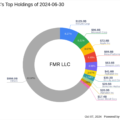New research reveals a striking perspective on how monetary policy in the United States is shaped. While many often attribute the primary role of setting monetary policy to the Federal Reserve (the Fed), a recent study suggests that the U.S. Treasury has an equally significant, if not more dominant, influence over monetary decisions.
The findings highlight the symbiotic relationship between the Treasury and the Fed, underscoring several key points:
- Interconnectedness: The operations of the Treasury are closely intertwined with the monetary policies enacted by the Fed.
- Debt Management: The Treasury’s strategies in managing national debt can affect the overall monetary landscape.
- Market Signals: Treasury securities often serve as essential indicators for market expectations, shaping monetary policy outcomes.
- Fiscal and Monetary Coordination: Effective coordination between fiscal strategies and monetary policy is crucial for overall economic health.
This study invites an important conversation about the balance of power in U.S. monetary policy. It raises questions about the governance of monetary tools and whether there is adequate separation of duties or if there is too much overlap.
In light of these findings, investors and policymakers may need to reconsider their strategies and expectations. As government entities work together, understanding their collective influence could provide insights into future economic conditions and the overall stability of the financial system.
As the economic landscape evolves, the dynamic roles of both the Treasury and the Fed will undoubtedly continue to be a focal point for analysis, discussion, and policy-making in the United States.











Leave a Reply